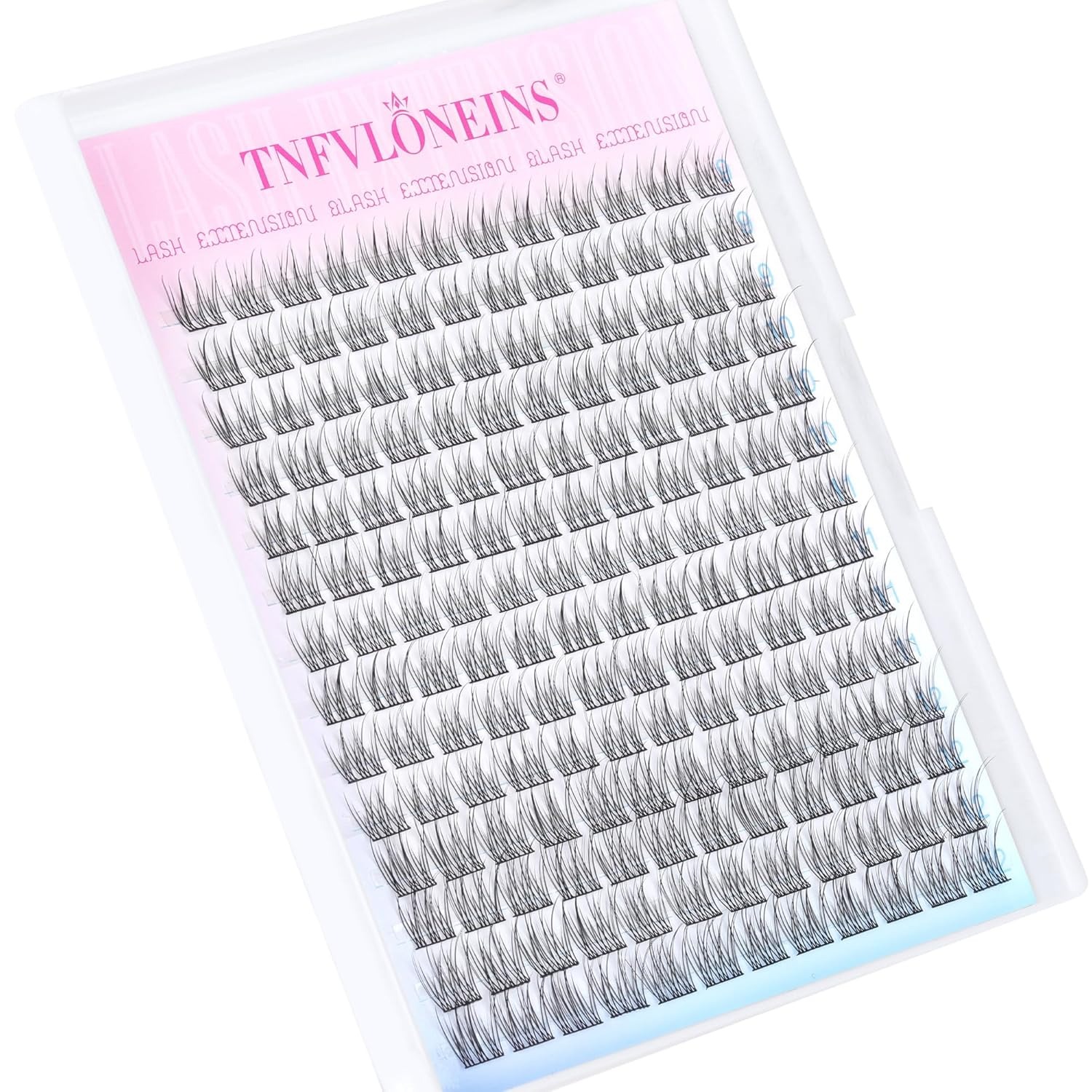Finding the perfect face sunscreen for sensitive skin can be challenging. Sensitive skin requires careful selection of products to avoid irritation while ensuring adequate protection from the sun. This guide delves into the essentials of choosing, applying, and maintaining sun protection tailored for delicate skin types. Whether you’re navigating daily routines or special occasions, understanding the nuances of sensitive skin sunscreen will help you achieve healthy, radiant skin without discomfort.
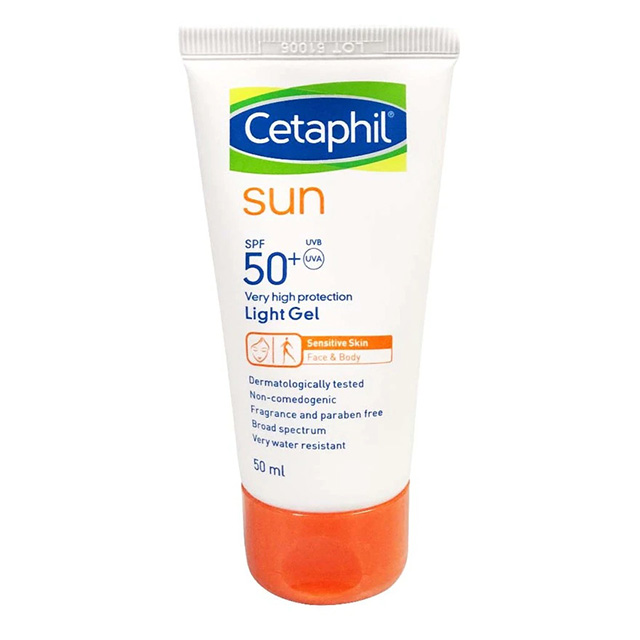 Hypoallergenic SPF Breakdown: What Ingredients to Look For (and Avoid)
Hypoallergenic SPF Breakdown: What Ingredients to Look For (and Avoid)
Selecting the right sunscreen begins with understanding its ingredients. Hypoallergenic sunscreens are formulated to minimize the risk of allergic reactions, making them ideal for sensitive skin. However, knowing which ingredients to seek and which to avoid is crucial.
Ingredients to Look For
- Zinc Oxide and Titanium Dioxide: These physical blockers sit on the skin’s surface, reflecting UV rays without causing irritation.
- Mineral-Based Formulas: Opt for mineral sunscreens as they are less likely to clog pores or cause breakouts.
- Fragrance-Free: Fragrances can trigger sensitivities; choosing unscented products reduces this risk.
- Antioxidants: Ingredients like vitamin E and green tea extract provide additional protection against environmental stressors.
Ingredients to Avoid
- Chemical Filters: Ingredients like oxybenzone and avobenzone can cause irritation for sensitive skin.
- Alcohol-Based Components: These can dry out the skin, leading to increased sensitivity.
- Synthetic Fragrances and Dyes: These additives often provoke allergic reactions and should be avoided.
- Parabens and Sulfates: These preservatives can irritate sensitive skin and disrupt its natural barrier.
By carefully selecting products with beneficial ingredients and avoiding common irritants, you can find a face sunscreen for sensitive skin that protects without compromising comfort.
The Double-Cleansing Myth: How to Remove SPF Without Irritating Skin
Double-cleansing has gained popularity as an effective skincare routine. However, for sensitive skin, this method can sometimes lead to irritation if not done correctly. Understanding the right approach ensures that you remove SPF thoroughly without harming your skin.
What is Double-Cleansing?
Double-cleansing involves using two different cleansers: an oil-based cleanser followed by a water-based one. The first step removes makeup and sunscreen, while the second step cleanses the skin of any residual impurities.
How to Double-Cleanse Gently
- Choose Gentle Cleansers: Opt for fragrance-free, sulfate-free cleansers designed for sensitive skin.
- Use Lukewarm Water: Hot water can strip the skin’s natural oils, leading to dryness and irritation.
- Be Gentle with Your Face: Avoid harsh scrubbing. Instead, use circular motions with your fingertips to cleanse.
Alternatives to Double-Cleansing
If double-cleansing still irritates your skin, consider these alternatives:
- Micellar Water: A single-step solution that removes sunscreen and impurities without the need for multiple cleansers.
- Cream-Based Cleansers: These can effectively remove SPF while maintaining the skin’s moisture balance.
By adapting the double-cleansing technique to suit sensitive skin, you can ensure effective sun protection removal without causing irritation.
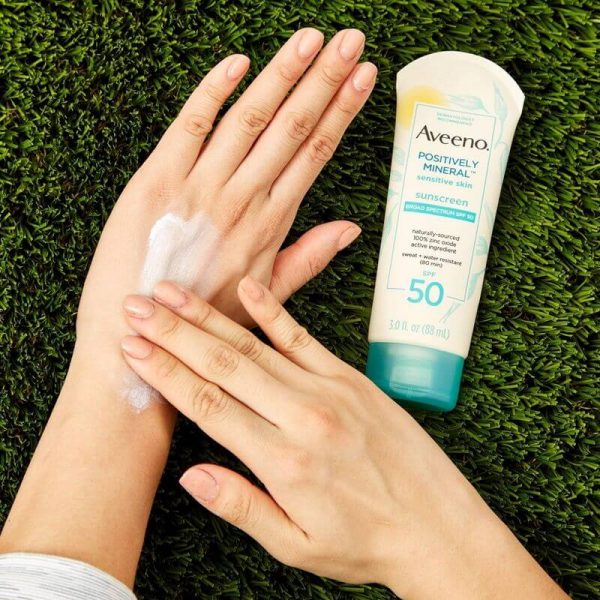 SPF Layering Guide: Pairing Sunscreen with Sensitive Skin Creams
SPF Layering Guide: Pairing Sunscreen with Sensitive Skin Creams
Layering sunscreen with other skincare products can enhance protection and cater to sensitive skin needs. However, it’s essential to do so correctly to maintain skin health and efficacy of the products.
Steps for Effective SPF Layering
- Start with a Moisturizer: Choose a hypoallergenic, fragrance-free moisturizer to hydrate your skin.
- Apply Sunscreen Last: Ensure that your sunscreen is the final step in your skincare routine to provide a protective barrier against UV rays.
- Wait Between Layers: Allow each product to absorb fully before applying the next to prevent pilling and ensure maximum effectiveness.
Recommended Combinations
- Hydrating Creams with Mineral Sunscreens: This combination ensures both moisture and protection without irritation.
- Serums with Antioxidant-Rich Sunscreens: Layering antioxidants can provide additional defense against environmental damage.
Tips for Sensitive Skin
- Patch Test New Products: Always test new combinations on a small skin area to check for adverse reactions.
- Avoid Heavy Layering: Overloading your skin with multiple products can lead to irritation. Keep your routine simple and effective.
By thoughtfully layering sunscreen with suitable creams, you can enhance protection and maintain the health of sensitive skin.
Swim-Friendly Options: Water Resistant SPF That Won’t Burn Eyes
For those with sensitive skin who love to swim, finding a water-resistant sunscreen that doesn’t irritate the eyes is essential. These specialized sunscreens offer protection without the discomfort often caused by traditional formulas.
Features of Swim-Friendly Sunscreens
- Water-Resistant Formulas: These sunscreens maintain their efficacy even after water exposure, ensuring continuous protection.
- Non-Irritating Ingredients: Look for products free from harsh chemicals and fragrances that can cause eye irritation.
- Tinted Options: Tinted sunscreens can offer additional protection from visible light, reducing the chance of streaks and eye irritation.
Top Recommendations
- Mineral-Based Sprays: These are easy to apply and less likely to run into the eyes during swimming.
- Gel or Fluid Formulas: Lightweight and less greasy, they provide a comfortable wear without clogging pores.
Application Tips
- Apply Before Swimming: Ensure that sunscreen is fully absorbed before entering the water to maximize its water-resistant properties.
- Reapply Frequently: Even water-resistant sunscreens need reapplication after prolonged water exposure to maintain protection.
Choosing the right swim-friendly sunscreen ensures that sensitive skin stays protected and comfortable, even during water activities.
 Winter SPF Necessity: Why Sensitive Skin Needs Protection Year-Round
Winter SPF Necessity: Why Sensitive Skin Needs Protection Year-Round
Many people neglect sunscreen during the winter months, but sensitive skin still requires protection from harmful UV rays regardless of the season. Understanding why and how to maintain sun protection in colder weather is crucial.
Why Winter Protection is Important
- UV Rays are Still Present: Even in winter, UVB and UVA rays can damage the skin.
- Reflection from Snow: Snow can reflect up to 80% of UV rays, increasing exposure.
- Dry Air and Wind: Harsh winter conditions can make the skin more susceptible to damage and irritation.
Selecting Winter-Friendly Sunscreens
- Rich, Moisturizing Formulas: Choose sunscreens that also provide hydration to combat dry winter air.
- Broad-Spectrum Protection: Ensure your sunscreen protects against both UVA and UVB rays.
- Antioxidant-Enriched Products: These can help combat oxidative stress caused by environmental factors.
Application Tips for Winter
- Layer Appropriately: Combine sunscreen with a nourishing moisturizer to maintain skin barrier integrity.
- Don’t Skip Days: Apply sunscreen every day, even when it’s cloudy or overcast.
Maintaining a consistent sunscreen routine in winter protects sensitive skin from unseen environmental threats and keeps it healthy year-round.
Patch Test Hacks: 3-Step Method to Avoid Breakouts
Before fully incorporating a new face sunscreen for sensitive skin into your routine, performing a patch test is essential to prevent unexpected reactions or breakouts. Here’s a simple 3-step method to ensure your sunscreen is safe for your skin.
Step 1: Choose a Small Area
Select an inconspicuous area of your skin, such as behind the ear or on the inner forearm, to apply the sunscreen.
Step 2: Apply a Small Amount
Dab a small amount of sunscreen onto the chosen area. Ensure only a thin layer is applied to minimize potential irritation.
Step 3: Wait and Observe
Leave the sunscreen on your skin for 24 hours without washing it off. Monitor for any signs of redness, itching, or irritation. If no adverse reactions occur, the sunscreen is likely safe for your face.
Additional Tips
- Use Products Separately: When testing, avoid using other products on the same area to accurately identify reactions.
- Gradual Introduction: Start by using the sunscreen once a day, then gradually increase usage as your skin builds tolerance.
A patch test helps ensure that your face sunscreen for sensitive skin is both effective and gentle, preventing unwanted breakout or irritation.
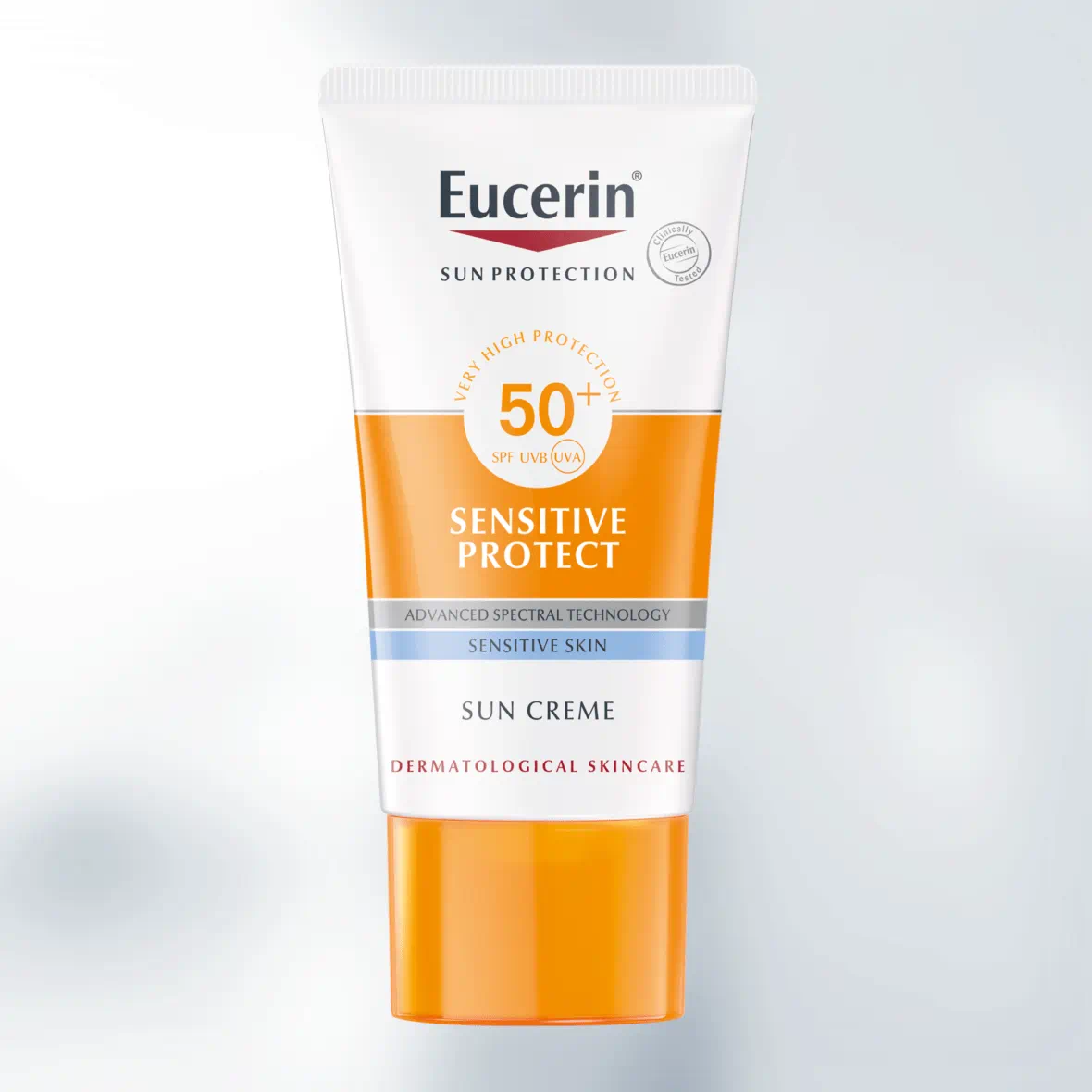 Ingredient Red Flags: Common Triggers in “Sensitive” Sunscreens
Ingredient Red Flags: Common Triggers in “Sensitive” Sunscreens
Even sunscreens marketed for sensitive skin may contain ingredients that can trigger reactions. Being aware of these red flags helps in making informed choices.
Common Irritants to Avoid
- Chemical UV Filters: Ingredients like octinoxate and homosalate can cause irritation and hormonal disruptions.
- Fragrances: Both natural and synthetic fragrances can lead to allergic reactions and sensitivity.
- Alcohols: Denatured alcohol and SD alcohol can dry out and irritate sensitive skin.
- Essential Oils: While natural, some essential oils like lavender and tea tree oil can be irritating to sensitive skin.
Hidden Culprits
- Silicones: Ingredients such as cyclopentasiloxane can clog pores and cause breakouts.
- Preservatives: Parabens and formaldehyde-releasing preservatives can lead to skin reactions over time.
- Dyes: Even natural dyes can cause irritation for those with highly sensitive skin.
How to Identify Safe Ingredients
- Read Labels Carefully: Always scrutinize the ingredient list for potential irritants.
- Opt for Simpler Formulas: Fewer ingredients generally mean fewer chances for irritation.
- Choose Products with Clear Labeling: Look for terms like “hypoallergenic” and “dermatologist-tested” but verify the ingredient list regardless.
Avoiding these common triggers ensures that your face sunscreen for sensitive skin remains protective without causing harm.
Morning Routine Integration: SPF Application Order for Calm Skin
Integrating sunscreen into your morning skincare routine is vital for maximum protection. However, the order in which you apply products can affect the efficacy and comfort of your regimen, especially for sensitive skin.
Optimal Order of Application
- Cleanser: Start with a gentle, fragrance-free cleanser to remove impurities without stripping moisture.
- Toner (Optional): Use a soothing, alcohol-free toner to balance your skin’s pH.
- Serum: Apply any treatment serums, such as those with antioxidants or hyaluronic acid.
- Moisturizer: Choose a hypoallergenic moisturizer to hydrate and nourish your skin.
- Sunscreen: Apply your face sunscreen for sensitive skin as the final step to create a protective barrier.
Application Tips for Sensitive Skin
- Use a Small Amount: A pea-sized drop is sufficient for full coverage without overwhelming the skin.
- Apply Evenly: Ensure an even layer across all exposed areas, including the ears and neck.
- Allow Absorption: Let each product absorb fully before applying the next to prevent pilling and ensure effectiveness.
Additional Considerations
- Consistency is Key: Apply sunscreen every morning, rain or shine, to maintain continuous protection.
- Reapplication: If you’re spending extended time outdoors, reapply every two hours or after sweating.
By following the correct application order, you integrate face sunscreen for sensitive skin seamlessly into your morning routine, ensuring calm and protected skin throughout the day.
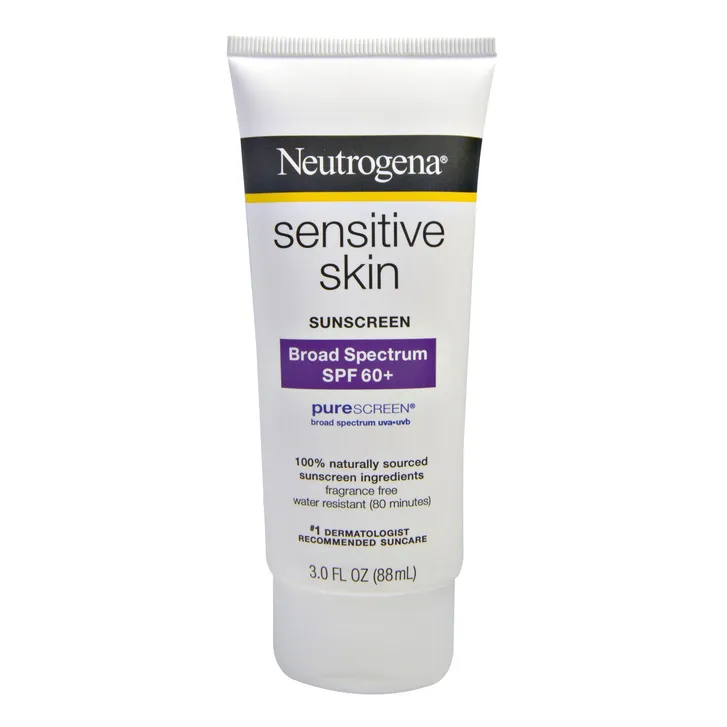 Conclusion
Conclusion
Choosing the right face sunscreen for sensitive skin involves understanding ingredient lists, proper application techniques, and how to incorporate sunscreen into your daily routine without causing irritation. From recognizing hypoallergenic components to mastering gentle cleansing methods, each step plays a crucial role in maintaining healthy, protected skin. Additionally, being aware of potential ingredient triggers and conducting patch tests can significantly reduce the risk of adverse reactions.
Whether you’re enjoying summer activities, navigating winter’s harsh elements, or maintaining a consistent skincare regimen, the right sunscreen provides essential protection year-round. Embrace these tips and strategies to find a sunscreen that not only safeguards your skin from UV damage but also nurtures its delicate nature. Invest in products that respect your skin’s sensitivity, and enjoy the confidence that comes with knowing you’re well-protected and comfortable every day.


